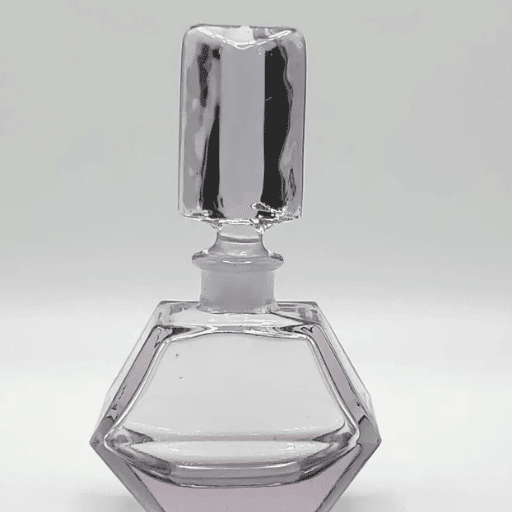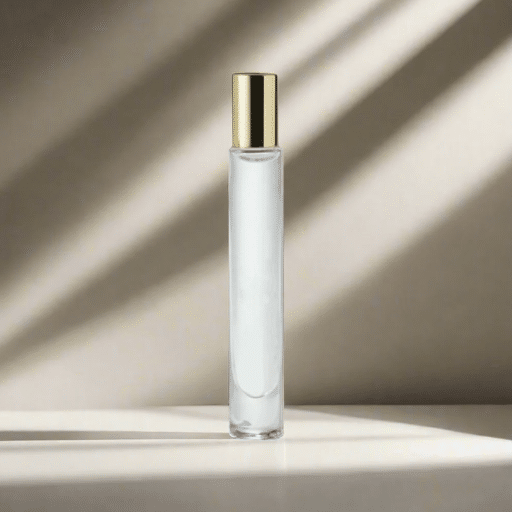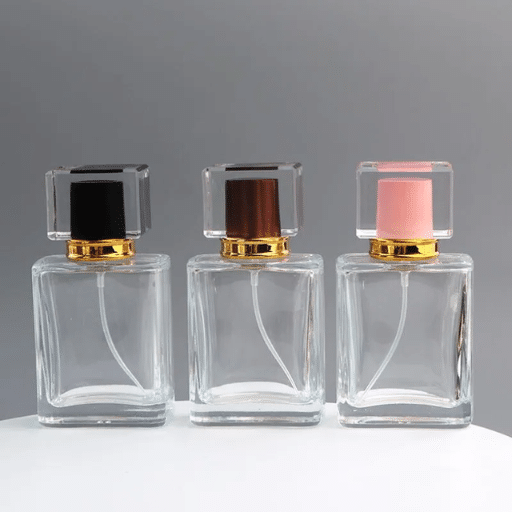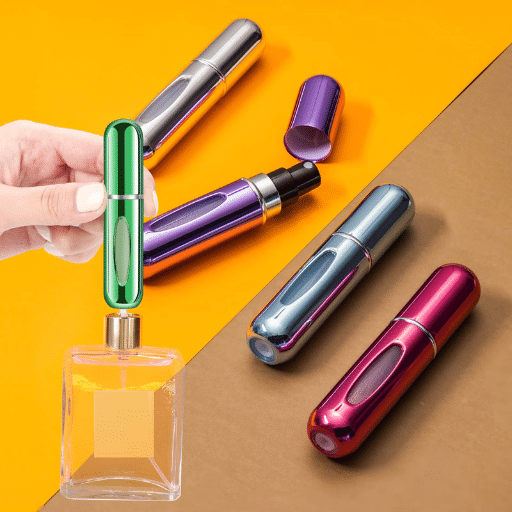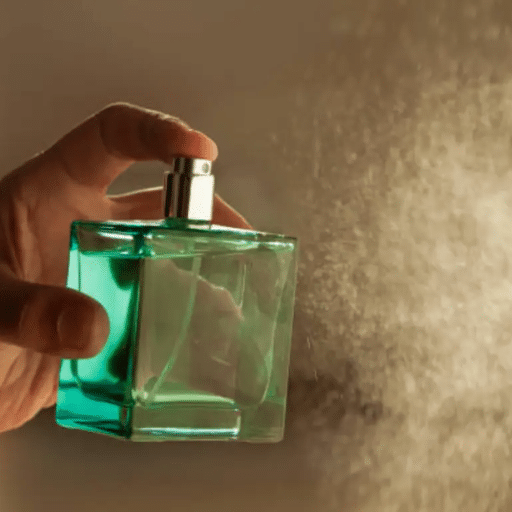Empty glass perfume bottles often symbolize elegance and artistry, yet they are frequently discarded after use, contributing to unnecessary waste. What if these beautiful containers could serve a purpose beyond their original intent? This article explores the most effective strategies to repurpose and refill empty glass perfume bottles, transforming them into sustainable and functional items. Whether you’re looking to save money, reduce waste, or get creative with DIY projects, this guide will provide you with detailed, step-by-step techniques. By the end, you’ll be equipped with practical insights and inspiration to breathe new life into these luxurious vessels.
What Are the Benefits of Using Refillable Perfume Bottles?

Refillable perfume bottles offer several notable benefits. Firstly, they significantly reduce waste by minimizing the need for single-use packaging, making them an environmentally responsible choice. Secondly, they are cost-effective, allowing users to purchase fragrance refills at a lower price compared to buying new bottles. Additionally, refillable bottles often feature durable and elegant designs, ensuring long-term usability while maintaining a luxurious aesthetic. Finally, they provide customization opportunities, as users can easily refill them with different scents to suit their preferences. These advantages make refillable perfume bottles a practical and sustainable option for consumers.
Advantages of Refillable Perfume Bottle Options
- Cost-Effectiveness: Refillable perfume bottles allow consumers to purchase fragrance refills at a reduced cost compared to buying entirely new bottles, making them a budget-friendly option over time.
- Environmental Sustainability: By reducing the need for single-use packaging, refillable bottles cut down on waste, contributing to eco-friendly practices and minimizing environmental impact.
- Durability and Longevity: These bottles are often crafted from high-quality materials, ensuring they remain functional and aesthetically pleasing over extended periods of use.
- Customization: Users can easily refill their bottles with different fragrances, offering flexibility and the opportunity to experiment with various scents according to preference.
- Convenience: Refillable options simplify the process of replenishing perfumes, as they are specifically designed for easy refilling without the need for additional tools or complex procedures.
How to Choose the Right Glass Bottle for Refilling
When choosing the right glass bottle for refilling, I focus on a few key factors to ensure functionality and durability. First, I prioritize material quality—the glass must be strong, non-reactive, and able to preserve the fragrance without altering its composition. Second, I consider the capacity, selecting a size that matches my usage needs while remaining portable. Third, the design and compatibility are crucial; the bottle should feature a secure, leak-proof closure and allow for easy refilling without spilling. Lastly, I think about aesthetic preferences, ensuring the design reflects my style while maintaining practicality. These criteria help me pick the most reliable and effective option for my refilling needs.
Environmental Impact of Using Refillable Perfume
The use of refillable perfume bottles significantly reduces environmental waste by minimizing the production and disposal of single-use containers. Traditional single-use perfume packaging often consists of glass, plastic, and metal components that contribute to excessive resource extraction and waste in landfills. By reusing the same container, the carbon footprint associated with manufacturing and shipping new bottles is greatly reduced.
From a technical perspective, glass and aluminum—common materials in refillable bottles—are highly recyclable and durable, extending the lifecycle of the product. An ideal refillable perfume bottle should be constructed from high-quality materials such as borosilicate glass or anodized aluminum to ensure longevity and tolerance to repeated refills (e.g., up to 50-100 uses without degradation). Additionally, fewer energy-intensive processes, such as plastic molding, are required compared to disposables, further decreasing ecological impact.
Furthermore, refill systems often involve bulk perfumery, which reduces packaging demand and streamlines transportation. This method can lower packaging waste by approximately 70%, based on industry averages. Thus, adopting refillable perfume products aligns with sustainable consumer practices by minimizing waste and conserving natural resources.
How Can You Repurpose Empty Glass Perfume Bottles?
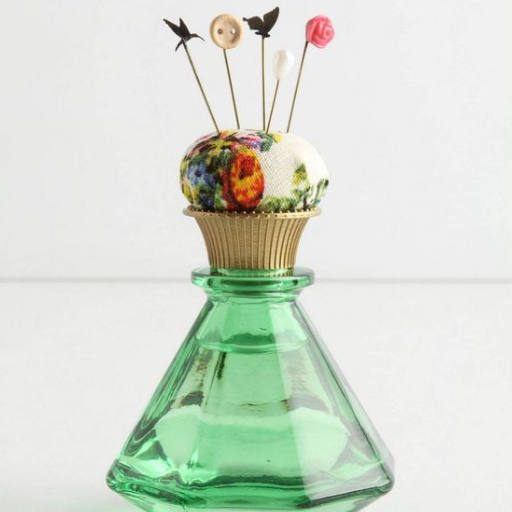
Empty glass perfume bottles can be repurposed in various practical and creative ways. They can be cleaned and reused as decorative vases for small flowers or dried arrangements. Additionally, these bottles can serve as elegant storage containers for essential oils, reed diffusers, or even as a holder for small items like pins and beads. Upcycling them into decorative pieces, such as custom ornaments or candle holders, is another sustainable option. Proper cleaning and removing any residual fragrance are vital steps before repurposing to ensure safety and usability.
Creative Ways to Use Empty Perfume Bottles
From my experience and research, there are several practical and aesthetic ways to repurpose empty perfume bottles. First, they work excellently as mini flower vases—I’ve found they hold small floral arrangements beautifully, adding charm to any space. Another creative approach is using them as reed diffusers; simply clean the bottle thoroughly, fill it with essential oil, insert reeds, and you have a functional and decorative fragrance accessory. For those who are more hands-on, turning these bottles into custom-designed ornaments or candle holders allows for a personal and sustainable touch. However, it’s crucial to clean them meticulously to remove any leftover fragrance residue to ensure they are safe and ready for reuse. These ideas not only reduce waste but also showcase creativity and practicality simultaneously.
DIY Projects with Glass Empty Bottles
When it comes to DIY projects with glass empty bottles, I find them incredibly versatile and sustainable. Personally, I’ve used them to craft decorative vases by painting or etching intricate designs on the surface. Another favorite project is transforming bottles into unique light fixtures by installing LED string lights or wiring them into functional pendant lamps. For a simpler yet practical approach, I often repurpose them as kitchen storage jars by adding cork or screw-top lids, keeping ingredients fresh while maintaining an aesthetic appeal. These projects not only help upcycle waste but also add a personalized touch to any space.
How to Clean and Prepare Glass Perfume Bottles for Reuse?
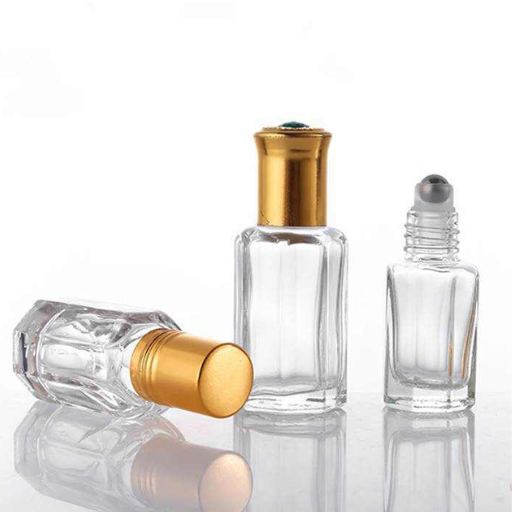
To clean and prepare glass perfume bottles for reuse, rinse the bottle with warm water first to exlude any remaining liquids. Subsequently, add a mix containing warm water and a splash of mild dish soap into the bottle. Primer for 10 to 15 minutes, followed by scrubbing the interiors using bottle brushes or cotton swabs to get rid of all wads. If there are scents that still linger, get rid of the rest with alcohol, white vinegar, or mix white vinegar with some water in equal halves. Once everything has been rinsed, you can allow the bottle to dry and air out. Ensuring the new use does not have any odor, residue, or contaminates is its new role which cleans the bottle thoroughly.
Steps to Clean Empty Glass Perfume Bottle
- Empty and Rinse the Bottle
Start by ensuring the perfume bottle is completely empty. Rinse it thoroughly with warm water to remove any loose residue or remaining liquid inside.
- Prepare a Cleaning Solution
Create a mixture of warm water and a mild liquid soap. Alternatively, if the residue is difficult to remove, mix equal parts white vinegar and water or use a small amount of rubbing alcohol for a stronger cleaning solution.
- Clean the Interior
Pour the cleaning solution into the bottle, filling it about halfway. Seal the bottle with its stopper or cap and shake vigorously for a few minutes to dislodge any internal buildup. For persistent residue, use a bottle brush, cotton swab, or pipe cleaner to scrub the interior gently.
- Disassemble and Clean the Components
If possible, disassemble any removable components, such as the spray nozzle and cap. Clean these separately by soaking them in warm soapy water and scrubbing with a soft brush or cloth to eliminate buildup.
- Rinse and Neutralize Odors
Rinse the bottle and its components thoroughly with warm water to remove soap or cleaning solution. If odors persist, perform an additional rinse using a solution of baking soda and water, or fill the bottle with white vinegar and leave it for 10-15 minutes before rinsing.
- Dry Completely
Allow the bottle and its components to air dry completely by placing them upside down on a clean, lint-free towel. Ensure no moisture remains before use to prevent contamination or odors.
By following these steps, you can effectively clean and deodorize your empty glass perfume bottle, ensuring it is hygienic and ready for reuse or recycling.
Essential Tools for Cleaning Perfume Bottles
To properly clean a glass perfume bottle, having the right tools is essential for achieving thorough results without damaging the bottle. Below is a concise list of tools commonly recommended:
- White Vinegar
Used as a natural cleaning agent, white vinegar helps dissolve residue, remove odors, and provides gentle yet effective cleaning.
- Mild Liquid Soap
A fragrance-free, mild liquid soap is ideal for cleaning without leaving behind strong scents or residues. It works well in breaking down oil-based stains.
- Small Funnel
A funnel assists in guiding liquid cleaners into narrow bottle openings without spills, making the process more efficient.
- Cleaning Brushes
Specialized bottle brushes or pipe cleaners are indispensable for scrubbing hard-to-reach areas inside the bottle while ensuring no surface damage.
- Lint-Free Towel or Cloth
A lint-free towel is necessary to dry the bottle components thoroughly, preventing water spots or lint residue.
- Distilled Water
Using distilled water for rinsing avoids mineral build-up and ensures complete removal of cleaning agents within the bottle.
- Dropper or Syringe
A dropper or syringe is particularly useful for delivering precise quantities of liquid into the bottle without overfilling.
With these tools, you can optimally clean your perfume bottles for reuse or recycling, extending their lifespan while maintaining hygiene. Always follow proper cleaning techniques to avoid accidental damage.
Where to Buy Wholesale Perfume Bottles?
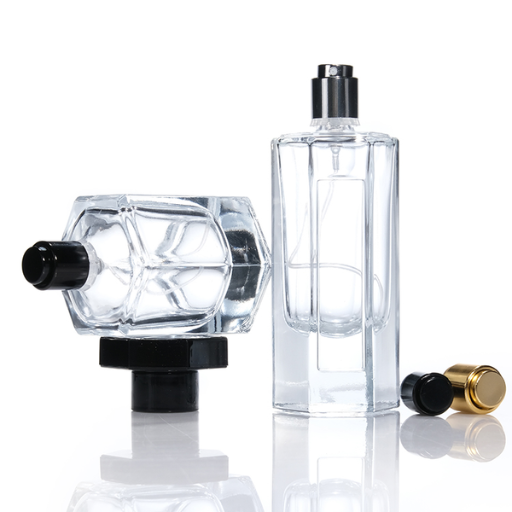
When searching for a reliable source to buy wholesale perfume bottles, it is essential to consider suppliers that offer quality materials, customizable options, and competitive pricing. One such trusted supplier is Fuzhou Longlu Packaging Co., LTD. They specialize in high-quality packaging solutions and provide a range of customizable perfume bottles tailored to suit various branding needs. Their expertise and commitment to excellence make them an excellent choice for wholesale purchases.
Top Suppliers for Bottles Wholesale
When evaluating top suppliers for bottles wholesale, I would recommend Fuzhou Longlu Packaging Co., LTD. They offer high-quality packaging solutions with a wide range of customizable options designed to meet diverse branding requirements. Their competitive pricing, attention to detail, and professional expertise make them a reliable choice for bulk purchases.
Factors to Consider When Buying Wholesale Perfume Bottles
- Material Quality
The material of the perfume bottle significantly impacts its durability and appearance. Glass is often preferred for its premium feel and ability to preserve the scent, but plastic and metal options may suit specific functional or aesthetic needs.
- Size and Capacity
Choosing the correct size and capacity of the bottles is crucial to align with your product line’s requirements. Smaller bottles work better for sample sizes, while larger bottles meet standard retail demands.
- Bottle Design and Aesthetics
The design of the bottle plays a pivotal role in attracting customers. Factors such as shape, color, and embellishments should resonate with your brand identity and appeal to your target market.
- Customization Options
Customization is essential for branding. Consider suppliers that offer options like logo printing, engraving, or unique cap designs to create a distinct presence in the market.
- Pricing and Order Quantities
Evaluate the cost per unit and minimum order quantities to ensure profitability while meeting production needs. Bulk discounts and flexible ordering policies can be advantageous for long-term business growth.
Are Mini Perfume Bottles a Good Option for Travel Perfume?
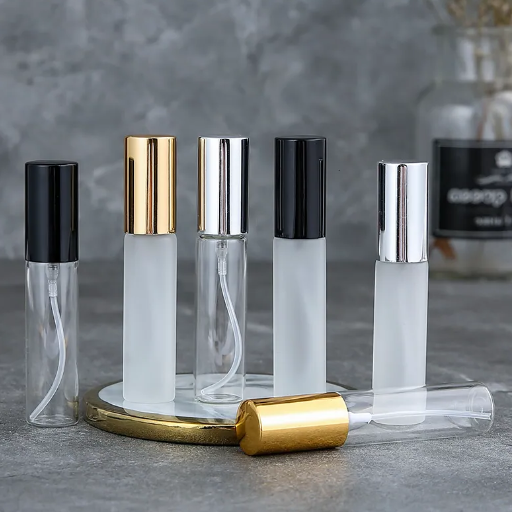
Absolutely, compact perfume bottles are the best option to carry with you while traveling. They fit excellently within the usual restrictions set by airlines and can easily be placed in carry on luggage because of their size. They come in a variety of different fragrances which can be taken without taking additional space in the luggage. In comparison to larger bottles, they are much more practical and can be carried without the worry of spilling the fragrance, making them ideal for travel.
Benefits of Travel Perfume Solutions
- Portability – Travel perfume solutions, such as mini bottles or atomizers, are designed to be lightweight and compact, making them easy to carry in handbags, pockets, or luggage while on the go.
- Compliance with Regulations – These solutions meet TSA and international liquid transport regulations, ensuring hassle-free travel through airports and other transportation hubs.
- Customization – Users can carry multiple scents in small quantities, allowing for fragrance variety and flexibility without the bulk of standard-sized bottles.
- Reduced Spillage Risk – Travel-sized containers are often designed with secure closures to prevent leaks and spills, protecting personal belongings and avoiding waste.
- Cost-Effectiveness – By using refillable atomizers or decanting, users can save money by purchasing full-sized bottles and transferring just the needed amount of their preferred perfume for travel.
Choosing the Right Mini Perfume for Your Needs
When selecting a mini perfume, I focus on three main factors. First, I consider my scent preferences—whether I prefer floral, woody, or citrus notes—ensuring the fragrance aligns with my taste. Second, I evaluate the container design, prioritizing compact and leak-proof options for convenience and safety during travel. Lastly, I think about the purpose of use—do I need it for daily wear, special occasions, or sampling a new scent? These considerations help me choose a mini perfume that meets both my practical needs and personal preferences effectively.
Reference Sources
-
FragranceX Blog: What To Do With Empty Perfume Bottles – highlights ways of turning used mini-planters or even reed diffusers into creative DIYs.
-
WikiHow: How to Recycle Perfume Bottles – equally addresses how to recycle perfume bottles by outlining the steps to discern the recyclable components.
-
Three Bamboo: Basic Knowledge About Refilling Perfume Bottles – covers how to safely and effectively refill perfume bottles.
-
KimecoPak Blog: Can Perfume Bottles Be Refilled? – utilizes a step-by-step approach outlining the intricacies of refilling perfume bottles while avoiding dwellings on spills and overfilling.
-
FragranceX Blog: 15 Ways to Repurpose Perfume Bottles – focuses on the idea of repurposing old perfume bottles and gives ideas like making DIY perfumes, room sprays, and more.
Frequently Asked Questions (FAQs)
Q: How can I safely clean and prepare an empty glass perfume spray bottle for reuse?
A: To clean and prepare an empty glass perfume spray bottle, first rinse it with warm water to remove any residue. Next, use a mixture of water and mild soap or vinegar to clean the inside. Rinse thoroughly again and let it air dry completely before refilling.
Q: What types of liquids can I refill into a glass perfume spray bottle?
A: You can refill a glass perfume spray bottle with various liquids such as custom perfumes, essential oils, cologne, or DIY fragrance blends. Ensure the liquid is suitable for a spray bottle and does not clog the sprayer.
Q: Can I refill a glass perfume spray bottle with essential oils?
A: Yes, you can refill a glass perfume spray bottle with essential oils. However, it’s advisable to dilute the oils with a carrier oil to ensure smooth spraying and to prevent the sprayer from clogging.
Q: What is the best way to transfer fragrance into a small bottle for travel?
A: To transfer fragrance into a small bottle for travel, use a funnel or a pipette for precision. Make sure the small bottle, such as a 30ml or 50ml glass spray bottle, is clean and dry before transferring the fragrance.
Q: How do I create a custom perfume blend in a refillable empty bottle?
A: To create a custom perfume blend in a refillable empty bottle, start by selecting your essential oils or fragrance oils. Use a clear glass perfume bottle and add your base notes, followed by middle, and then top notes. Allow the blend to sit for a few days to meld before using.
Q: What precautions should I take when handling vintage perfume bottles?
A: When handling vintage perfume bottles, handle them gently to avoid damage. Use gloves to prevent leaving fingerprints or oils on the glass, and ensure they are stored in a cool, dry place away from direct sunlight.
Q: How can I use a fine mist spray bottle for a light fragrance application?
A: A fine mist spray bottle is ideal for a light fragrance application. Simply fill the bottle with your chosen scent and spray from a distance to enjoy a subtle and even distribution of fragrance.
Q: What is the benefit of using a frosted glass perfume bottle?
A: Frosted glass perfume bottles help protect the fragrance from light exposure, which can degrade the scent over time. They also offer a unique aesthetic and can be used for custom perfume presentations.
Q: Can I repurpose a glass perfume spray bottle for non-fragrance liquids?
A: Yes, a glass perfume spray bottle can be repurposed for non-fragrance liquids such as homemade cleaning solutions, water mists, or other cosmetic products, provided they are compatible with the sprayer mechanism.

